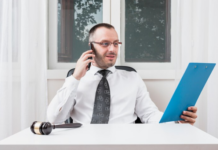The digital age has ushered in countless benefits, making life and business more efficient and interconnected. However, it has also brought forth a plethora of cyber threats that jeopardize the security of crucial computer data. As cyber threats evolve in sophistication, understanding and implementing protective measures is paramount. This guide elaborates on strategies to safeguard important computer information against potential cyber-attacks.
1. Regularly Update Software and Operating Systems
Cybersecurity stands as a dynamic and ever-shifting domain, responding tirelessly to the perpetual emergence of new threats and vulnerabilities. Developers, in their bid to stay ahead of potential breaches, frequently roll out software patches specifically designed to address and neutralize these vulnerabilities. Users must maintain a routine of regularly updating not just their primary operating systems but also all associated applications and anti-malware tools. By doing so, they ensure that their computers are fortified with the most recent security enhancements and protective measures. In essence, consistent software updates act as a primary defense line, safeguarding systems from a vast array of evolving cyber threats.
2. Employ Robust Firewall and Antivirus Solutions
Protecting your computer’s vital information necessitates a multi-layered approach, and one of the foundational steps is employing robust firewall and antivirus solutions. These tools act as the first line of defense against external threats, constantly monitoring and blocking malicious activities. While individual solutions can be effective, organizations with vast networks and significant data assets might benefit from managed cybersecurity services ensuring a holistic approach to threat detection and response. Such services usually provide a comprehensive suite of protections, including advanced firewalls and antivirus software tailored to the organization’s unique requirements. In essence, a combination of these proactive measures significantly reduces the risk of data breaches and cyber-attacks.
3. Implement Multi-Factor Authentication (MFA)
Multi-factor authentication (MFA) is a robust security measure that goes beyond traditional password-based protection, demanding users to verify their identity using multiple credentials. MFA often requires the combination of something the user knows, such as a password, with something they possess, like a unique code dispatched to their mobile device or a hardware token. Some systems even integrate biometric verification, leveraging fingerprints or facial recognition as an additional layer. This compounded approach ensures that even if one authentication factor is compromised, potential intruders still face formidable barriers to unauthorized access. Consequently, MFA acts as a powerful deterrent, offering an enhanced level of security and significantly diminishing the threat of data breaches.
4. Educate and Train on Phishing Attacks
Strong software and hardware protections are essential, but human alertness is also crucial, particularly given that many assaults originate from successful phishing tactics. Businesses can greatly lessen their susceptibility to these misleading methods by educating and training computer users to recognize and identify suspicious emails, dubious links, or questionable attachments. The red flags that are often present in phishing emails might be made more apparent by regular seminars or training sessions. Constant reminders to users to be wary of emails, verify the sender’s address, and think before acting on links or attachments are essential. Fostering a culture of knowledge and care can serve as a first line of protection against cyber-attacks.
5. Regular Backups to Multiple Locations
One of the most important ways to protect yourself against hacking and device failure is to back up your data regularly. By backing up their data regularly, businesses can guarantee that their most important information is still accessible in the event of a cyber-attack or another system failure. It is advised that backups be kept in many places for maximum safety. As ransomware becomes more common, it is important to have several layers of protection in place, and using both external hard drives and reliable cloud storage options is one way to do just that. In short, a thorough backup plan not only protects data but also guarantees the smooth running of operations, thereby reducing the likelihood of costly interruptions.
Conclusion
In the modern world, where data is as valuable as gold, safeguarding computer information is of paramount importance. By adopting a multi-faceted approach encompassing regular updates, robust security tools, user education, encryption, and diligent monitoring, individuals and organizations can fortify their defenses against cyber threats. The goal is to foster a culture of cybersecurity awareness, where protective measures are seamlessly integrated into daily operations, ensuring that vital computer data remains shielded from the ever-looming specter of cyber-attacks.









